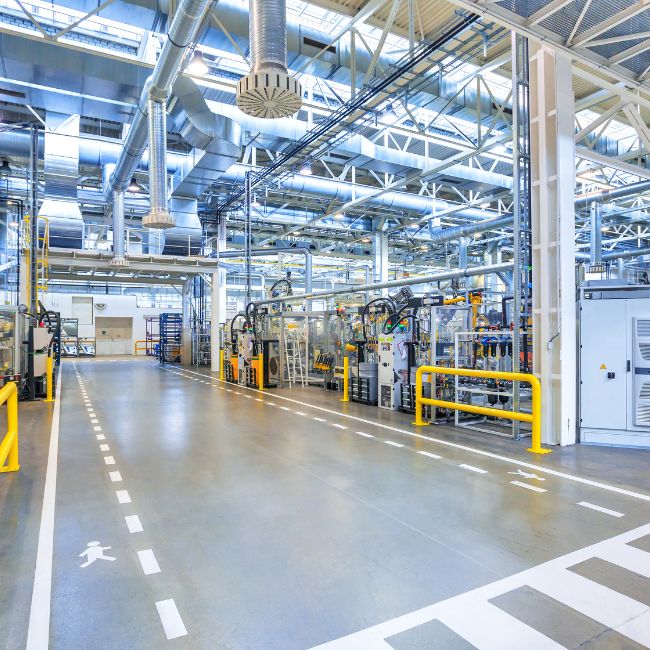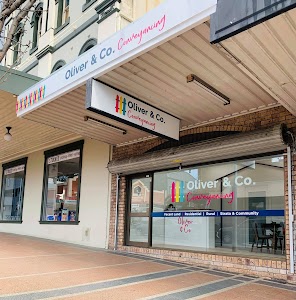
How to Buy Commercial Property: A Beginner’s Guide for Australian Investors
Investing in commercial property is an excellent way to diversify your portfolio and generate steady income. With the potential for higher returns than residential investments, commercial property can provide stability and long-term financial growth. However, buying commercial real estate requires careful planning and research. This guide will help you navigate the process and set you on the path to making a sound investment.
Step 1: Understand the Different Types of Commercial Properties
When buying commercial property, it’s essential to determine which type aligns with your investment goals. Each type has unique risks and benefits, so research which one matches your financial goals and risk tolerance. Common categories of commercial properties include:
Retail Spaces
Retail spaces are commercial properties used to sell goods and services directly to consumers. These spaces are designed to attract foot traffic and provide a conducive environment for businesses to engage with customers in person.

Retail properties can range in size and format, including:
- High street shops or storefronts.
- Shopping centres and malls.
- Stand-alone stores or big-box retailers (e.g., supermarkets or furniture outlets).
- Pop-up retail spaces for temporary events or seasonal sales.
The location of retail spaces is crucial, as they thrive in areas with high visibility and customer accessibility. Successful retail spaces often benefit from surrounding businesses, public transport, and infrastructure encouraging consumer traffic.
These spaces typically have commercial leases, which can involve complex terms regarding rent, fit-outs, and marketing contributions. You can search for shop and retail spaces that are for sale on realcommercial.com.au.
Office Buildings
Office buildings are commercial properties designed primarily for businesses to conduct administrative, professional, or corporate activities. In the past, this was mainly the high-rise buildings that dominated our city landscape. These properties cater to industries like finance, technology, law, and consulting, providing a professional space for employees, clients, and stakeholders to work and collaborate.
Types of Office Buildings:
- Central Business District (CBD) Offices: Located in the heart of major cities, offering premium spaces with higher rents.
- Suburban Offices: Found outside the city core, often offering more space at a lower cost.
- Co-working Spaces: Flexible shared offices used by freelancers, startups, or remote workers.
- Business Parks: Clusters of office buildings with integrated facilities like parking and shared services.

Key considerations for investors include choosing tenants, lease terms, rental yields, and location, with prime locations near public transport and amenities being the most desirable.
Industrial Spaces
Industrial spaces are commercial properties for manufacturing, warehousing, logistics, or distribution operations. They typically house businesses involved in production, storage, or shipping activities and are often located in areas with good access to major transport routes, such as highways, ports, and railways.
Australia’s industrial property market has experienced exponential growth, nearly doubling to almost $300 billion in less than three years.
Source: Australian Property Investor
Types of Industrial Spaces:
- Warehouses: Large spaces used for storing goods before distribution.
- Manufacturing Facilities: Properties designed for the assembly or production of goods.
- Distribution Centres: Spaces optimised for logistics operations, facilitating the quick movement of products.
- Flex Spaces: Multi-purpose properties that combine office and industrial areas.
Industrial properties are often valued for high ceilings, loading docks, large floor areas, and the ability to accommodate heavy machinery or extensive storage.

These spaces are crucial for industries such as e-commerce, manufacturing, and supply chain logistics, making them a key investment option for those seeking steady rental income.
Mixed-Use Properties
Mixed-use properties are commercial developments comprising a combination of residential and commercial units or two or more different land uses within the one development. These properties offer versatility by serving multiple purposes, often resulting in vibrant communities that integrate living, working and leisure spaces.
Types of Mixed-Use Properties:
- Residential-Commercial: Apartments or condos with retail stores or offices on the ground floor.
- Commercial-Industrial: Properties with both office spaces and light manufacturing or storage areas.
- Retail-Residential Complexes: Shopping centres with residential units above or nearby.
Mixed-use developments are becoming increasingly popular in urban areas for their ability to reduce commute times and foster community interaction. They diversify rental income, as different tenants (retailers, businesses, and residents) occupy the space, minimising the risks of relying on one tenant type.
These spaces require careful planning to ensure zoning compliance and efficient design.
Step 2: Research Market Trends and Select the Right Location
When it comes to property investment, location plays a crucial role in determining tenant demand, property value, and long-term growth. A well-selected location ensures stable income streams and increases the potential for appreciation over time.

To maximise your returns, it’s essential to assess economic activity, accessibility, zoning regulations, and future development plans when choosing a property.
- Tenant Demand & Property Value: Look for areas with thriving industries and growing populations—these attract tenants and stimulate local commerce.
- Infrastructure Access: Properties near highways, public transport, ports, or airports are ideal for businesses needing logistics support, employee access, or high foot traffic.
- Zoning Laws: Make sure the property is zoned correctly for your intended use to avoid operational or legal complications down the line.
- Future Development Plans: Investing in regions undergoing redevelopment or infrastructure upgrades can yield higher returns, though temporary disruptions or zoning changes could introduce risks.
Choosing the right location will ensure your property attracts reliable tenants, increases in value, and aligns with your long-term investment goals.
Step 3: Conduct Due Diligence on Potential Properties
Before making a purchase, conduct thorough due diligence to ensure the property aligns with your investment strategy. This involves:
- Title Searches: Verifying the ownership and legal status of the property.
- Building Inspections: Identifying any structural or maintenance issues.
- Zoning Checks: Ensure the property’s zoning matches your intended business activities.
- Lease Analysis: Review lease agreements for rental income details if the property is tenanted.
Proper due diligence will give you confidence in your investment and mitigate the risks associated with unforeseen complications.
Step 4: Secure Financing and Understand the Costs
Commercial property financing differs from residential loans. Prepare to provide a larger deposit (often 30-50%) and have a solid business plan to secure a loan. Explore financing options through local lenders and assess potential costs such as:
- Transfer Duty: Varies by state and can be a significant expense. For NSW, refer to Revenue NSW.
- Ongoing Maintenance and Repairs: Ensure these are budgeted for.
- Insurance: Including building insurance and public liability coverage.

Understanding and planning for these costs ensures that your investment remains profitable over time.
Step 5: Engage a Conveyancer for a Smooth Transaction
Commercial property purchases or leasing arrangements involve legal complexities requiring expert guidance. Engaging a professional conveyancer ensures the transaction is handled efficiently, with all legal documents adequately managed. With extensive experience in simple and complex commercial property transactions, we’re equipped to navigate leasing arrangements or purchases of any size. We assist with:
- Drafting and reviewing contracts to protect your interests and avoid unfavourable terms.
- Coordinating settlement for a smooth transfer of ownership or lease execution.
- Managing compliance with local property laws, ensuring your transaction aligns with regulations and zoning requirements.
Our expertise helps you avoid legal pitfalls, ensuring every step of the process is seamless and stress-free.
Step 6: Plan for the Long-Term Management of Your Investment
After purchase, ongoing management is essential to maximise your property’s value. Whether you lease it out or use it for your business, consider hiring a property manager to handle maintenance and tenant relations.
You can also use regular property reviews to adjust rent in line with market trends.
Make Your Move: Buy Commercial Property with Confidence
In this guide, we’ve covered the important stuff—picking the right location, doing your due diligence, and ensuring lease agreements and property laws are in check. Plus, we’ve highlighted how a professional conveyancer can make life easier by handling everything from drafting contracts to final settlement, whether a straightforward deal or a tricky transaction.
Whether you’re looking to lease or buy, getting expert help will save you time, protect your investment, and keep things stress-free.
Ready to buy commercial property with confidence? Get in touch today for expert conveyancing support and a free consultation to get started!
Disclaimer: The information provided in this blog post is for general informational purposes only and should not be considered as professional advice. We recommend consulting with qualified professionals for advice tailored to your individual circumstances.

Hi there! I'm Tayla Oliver
I founded Oliver & Co. Conveyancing to educate and support you through your legal, or property buying and selling journey, with affordable, full-service legal and conveyancing support. You can count on our experienced and friendly team to look after your best interests at every step of the way.
FREE CHECKLIST


